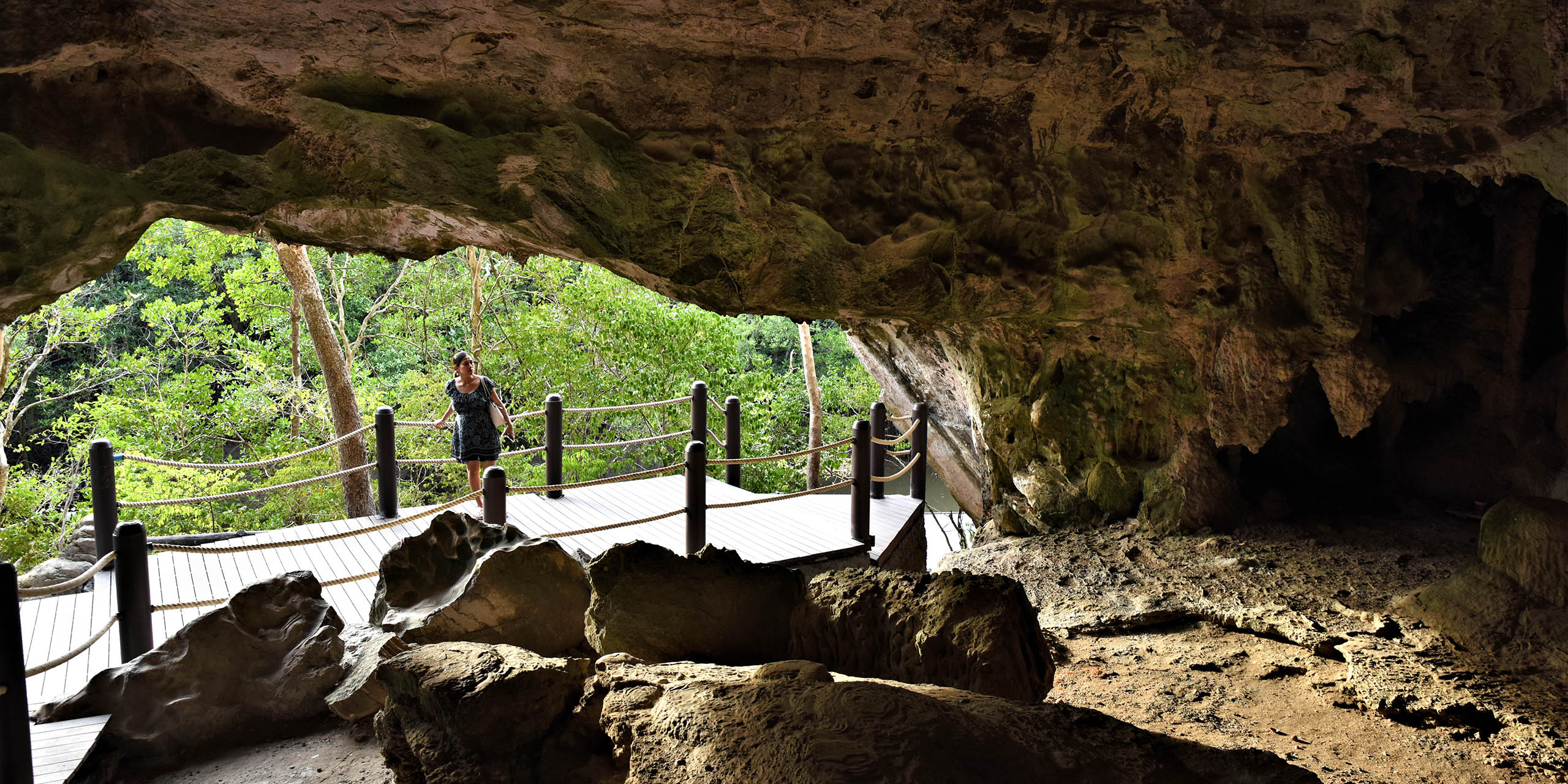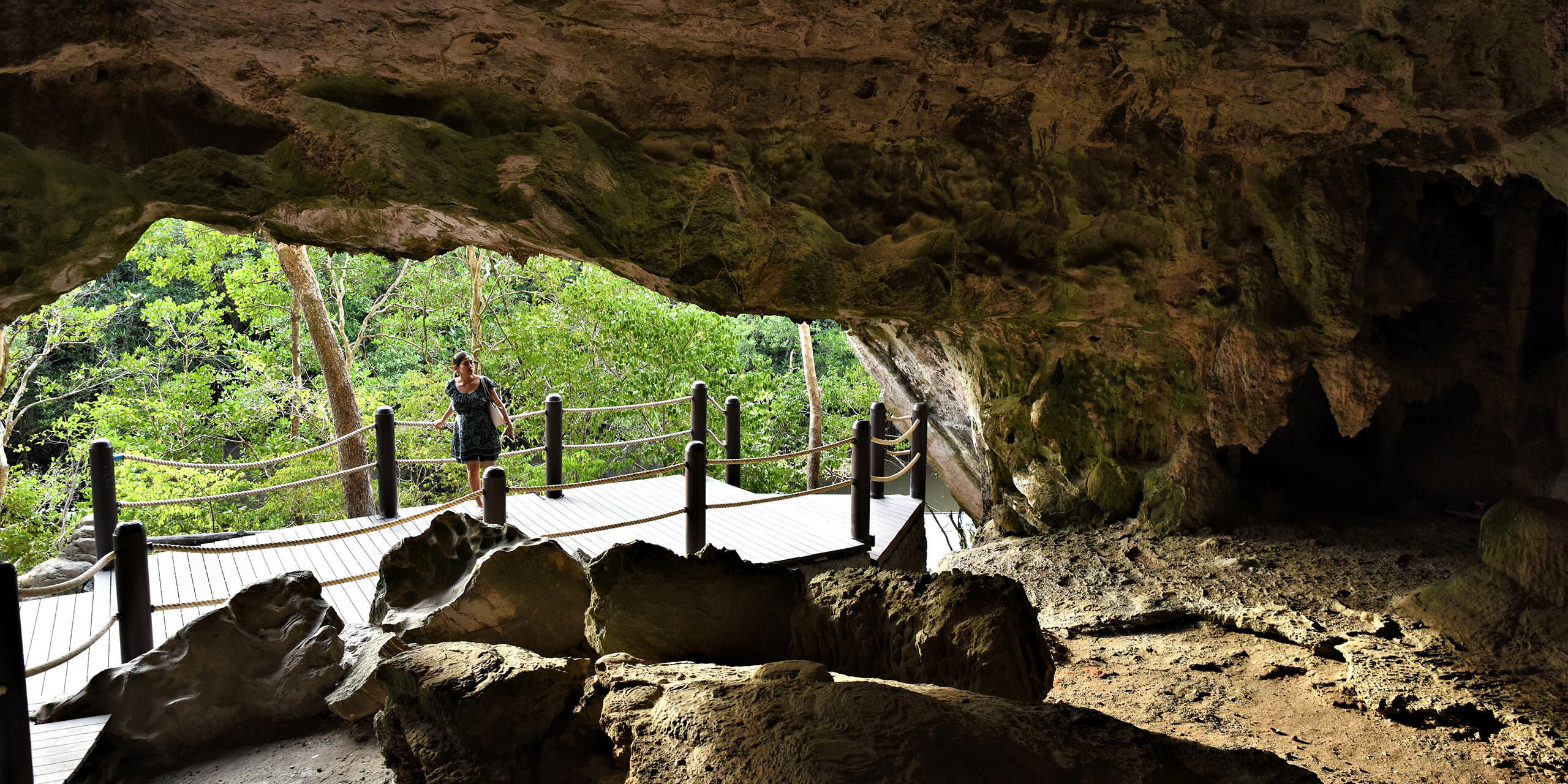
I’ve penetrated dense jungle, navigated underground rivers, and climbed through a dimly-lit cave. All to meet Mr. Lining. Yet I still can’t find him in this chamber even though I’m wielding a flashlight.
“Horns, he has horns,” my Thai guide tells me, holding his index fingers against the top of his head as a visual aid.
The guide knows exactly where Mr. Lining is hiding. He has introduced him to many visitors previously. So eventually he ends my forlorn search with a precise torch beam. The elusive man was just above us, perched on a cave wall.
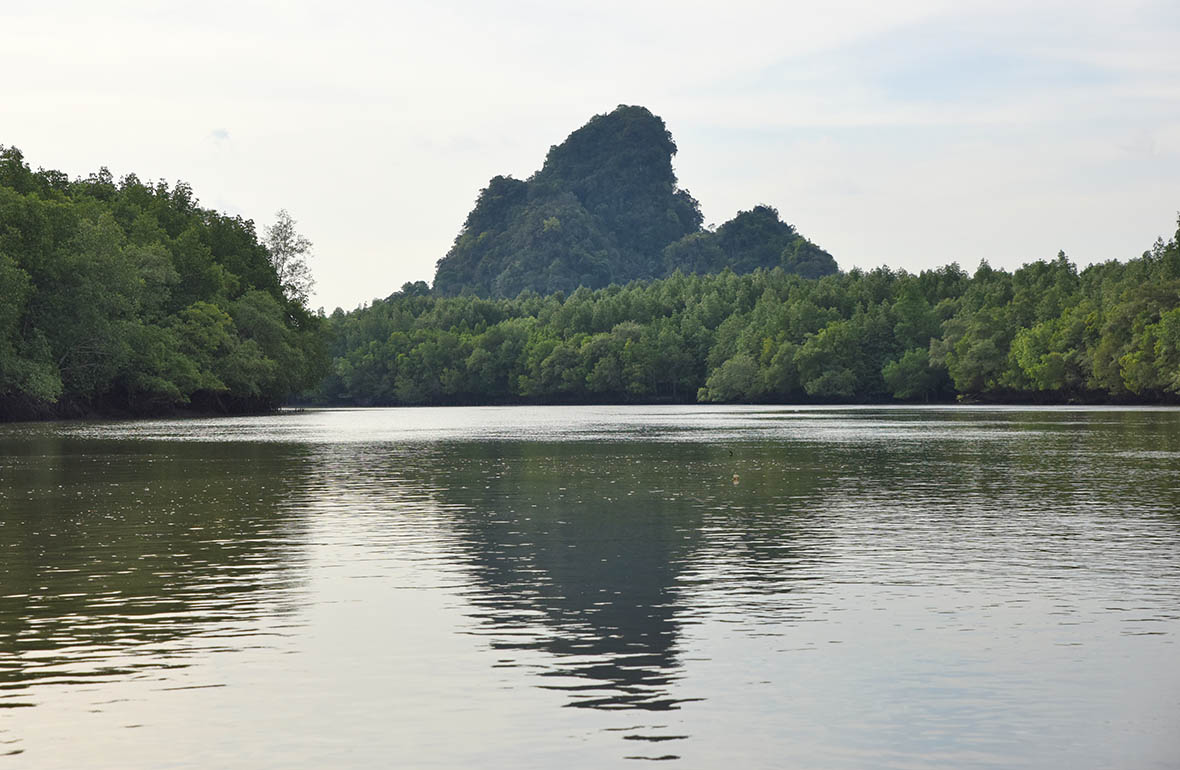
Mr. Lining never moves from here, having taken up residence in Krabi Province several millennia ago.
The scientists who discovered and named him believe he’s between 2,000 and 5,000 years old, along with the rest of the ancient humans and animals portrayed in Phi Hua cave. Concealed amid the mangrove forests and limestone peaks of Krabi, this remarkable rock art gallery is crucial to Thai history.
Thailand has many famous cave systems, not least Tham Luang in Chiang Rai which is world-renowned due to the 2018 soccer team rescue. But scant attention is afforded to Phi Hua, one of the country’s most important archaeological sites. This cave, which can be accessed only by boat, is decorated with more than 200 prehistoric paintings. Scientists believe they’re proof a society existed here as far back as 3000BC, making it one of the oldest civilizations in Thailand.
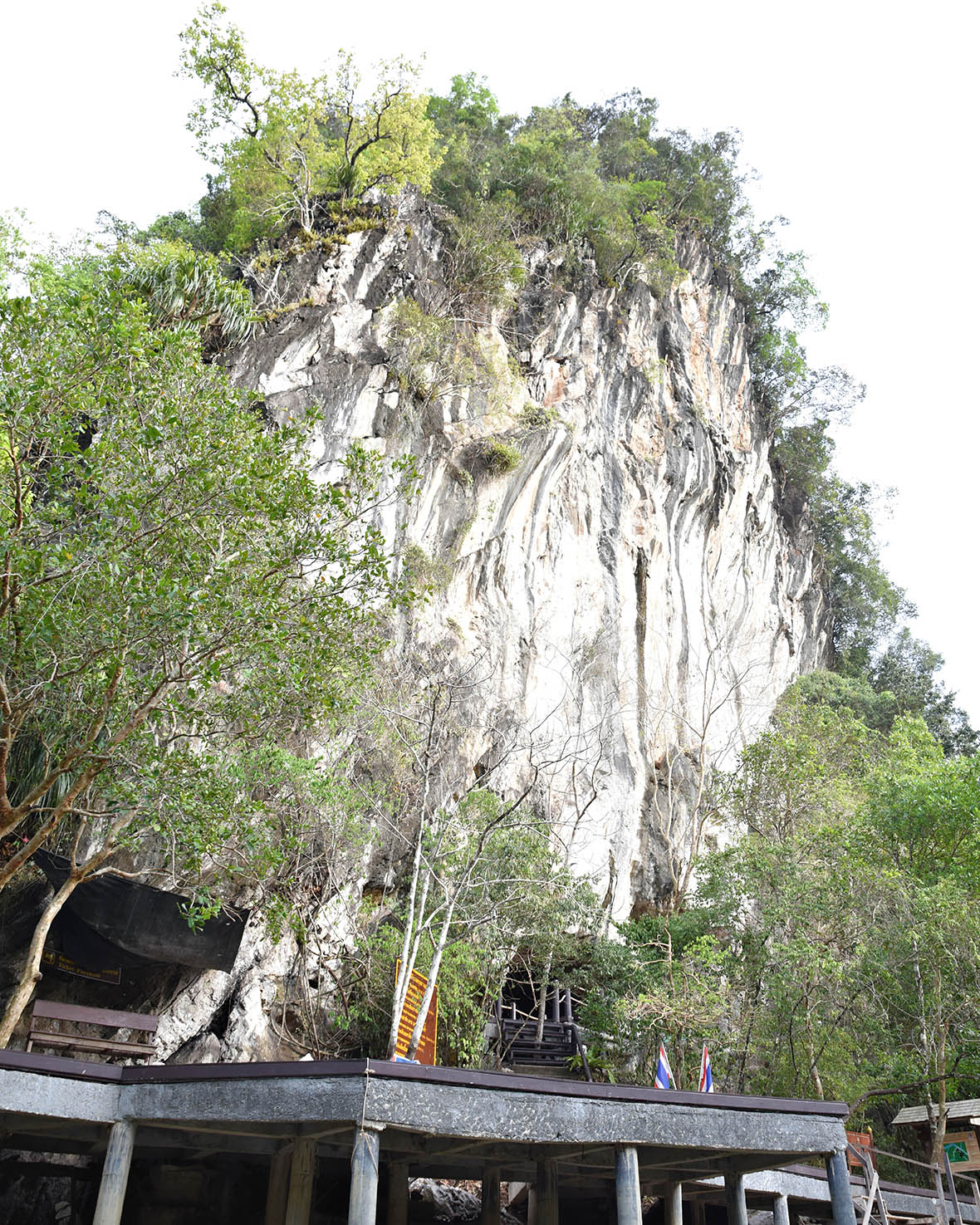
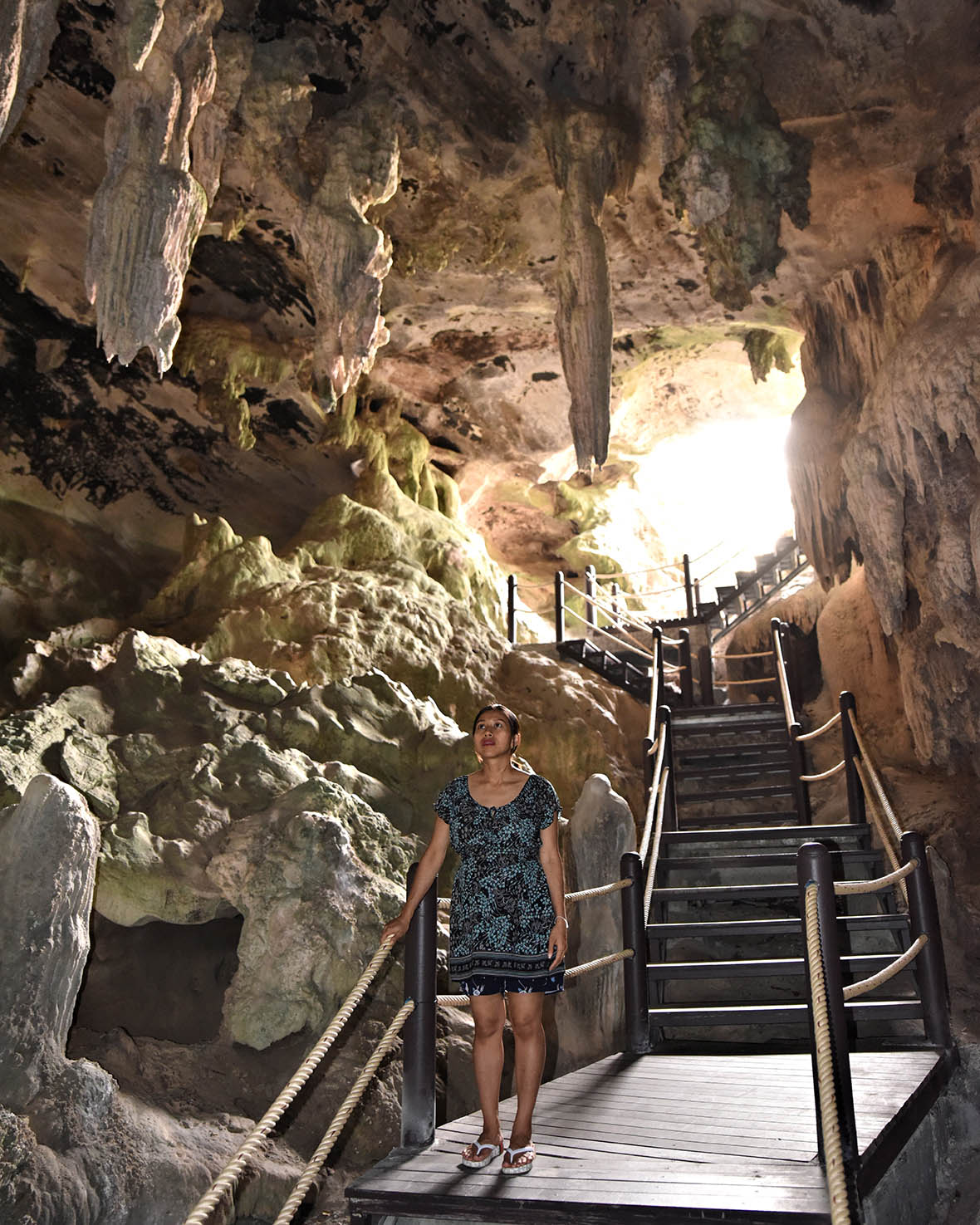
The faded sign at the entrance to Phi Hua says it houses Thailand’s largest collection of ancient rock art. That makes it an extraordinary place. Despite that, it’s entirely removed from Krabi’s tourist trail, which is dominated by beaches, island excursions, and rock climbing. Rock art, unfortunately, just isn’t a major drawcard.
In my home state Western Australia, for example, very few people have heard of Murujuga, the world’s biggest collection of rock art, which is adored by scientists but ignored by tourists and residents in WA. Phi Hua probably benefits from its low profile, though. A fragile archaeological site would not respond well to torrents of tourists. It is distant enough from Krabi’s resorts and backpacker haunts to remain anonymous.
In travel, getting somewhere can often account for much of the fun. This is certainly the case with Phi Hua.
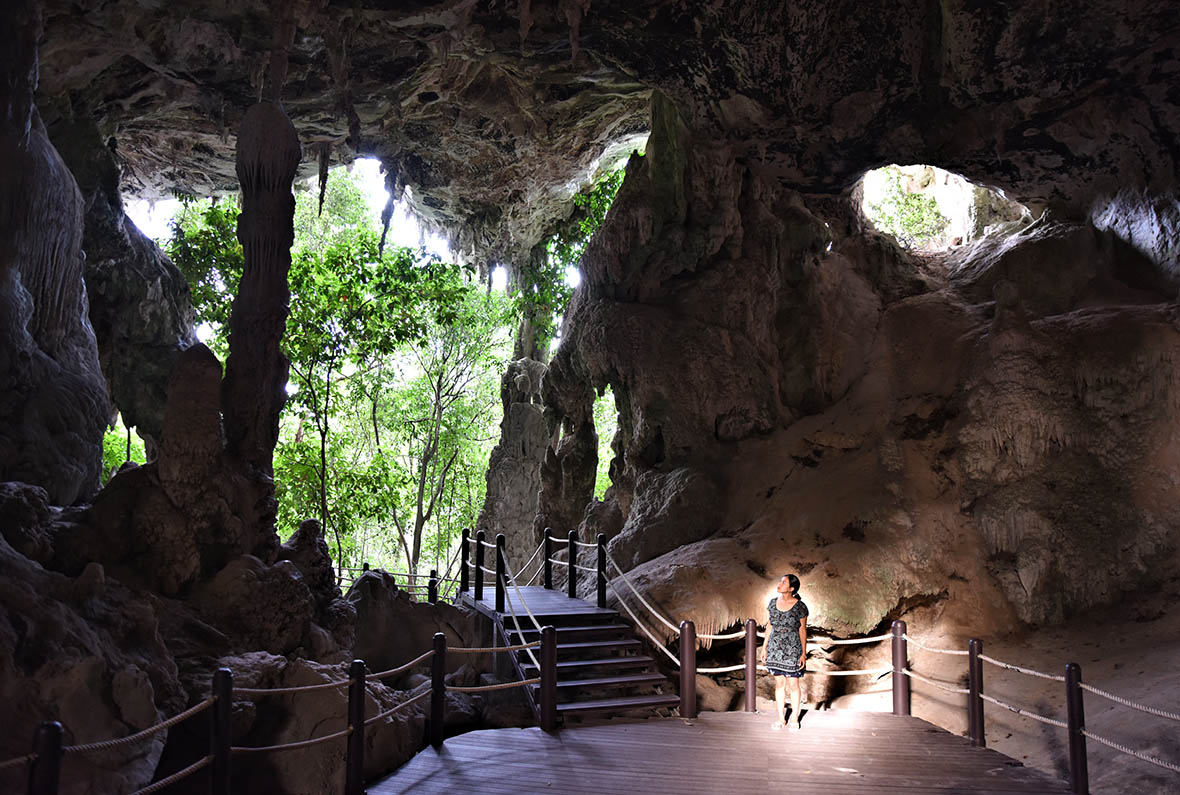
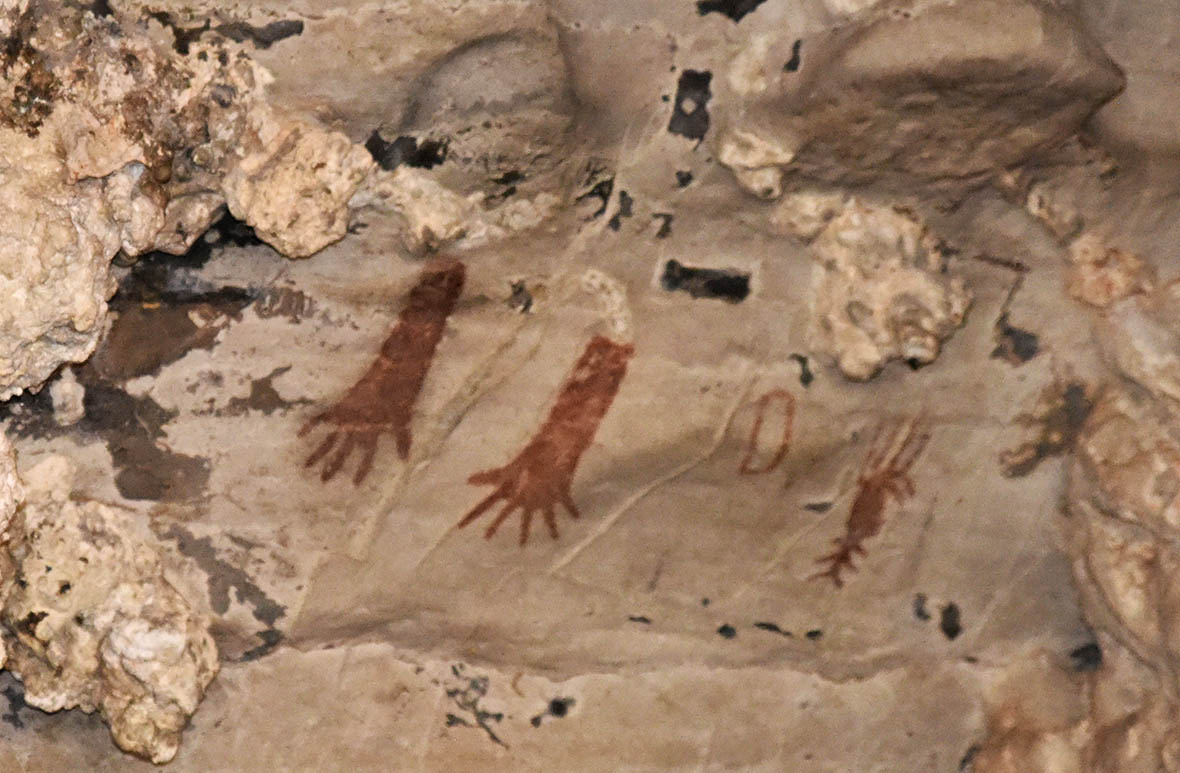
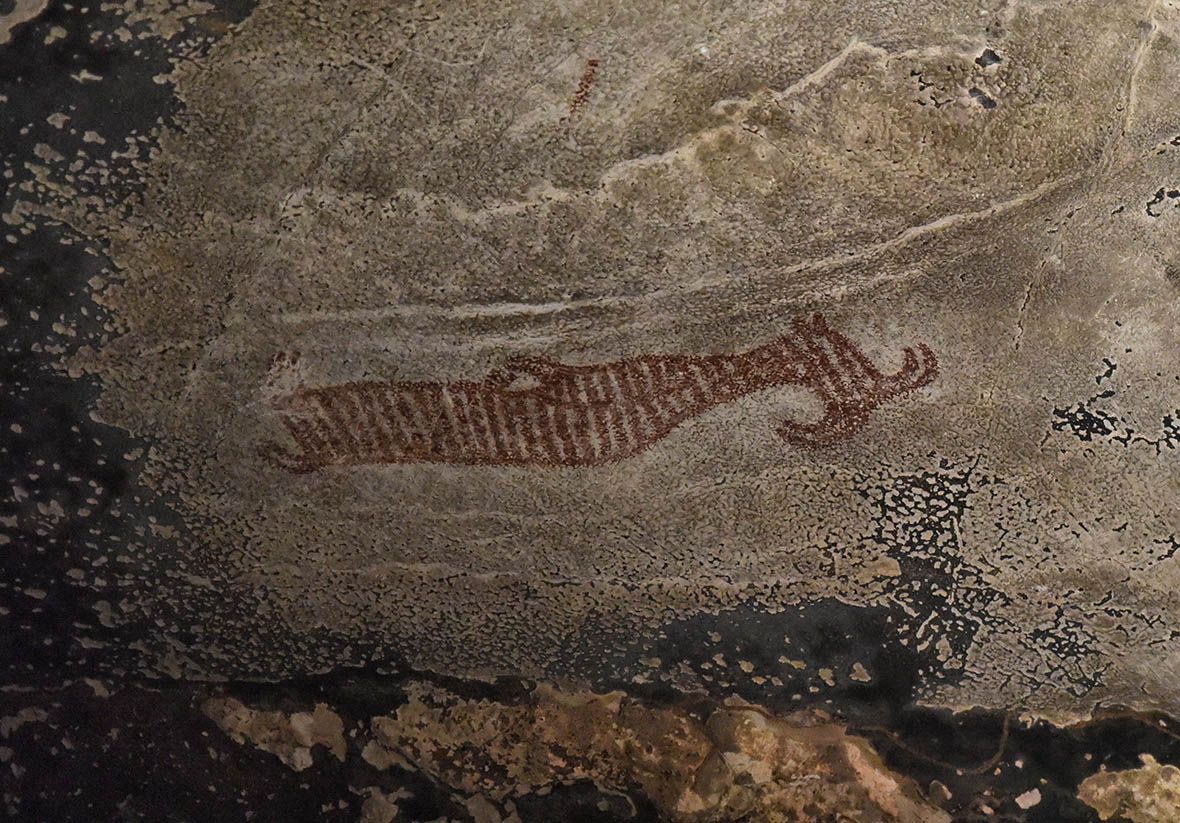
My favorite movies growing up were the Indiana Jones franchise. I used to try and emulate the adventures of the titular main character, using a stick to hack my way through the backyard shrubs of my Australian home.
The journey to Phi Hua unlocked something in my brain that took me back to those carefree days. It was a joyful sensation distinctly different from the awe of standing on a mountaintop, swimming at a pristine beach, or savoring a Michelin starred meal.
I felt giddy as my longtail boat departed a rickety wooden pier beneath jungle-draped peaks teeming with wildlife. It was a one-hour drive from Ao Nang to reach this pier, deep in the Than Bok Khorani National Park, before we skimmed 2km along the Tha Pring river. All around us was an untamed, uninhabited, unbelievable landscape.
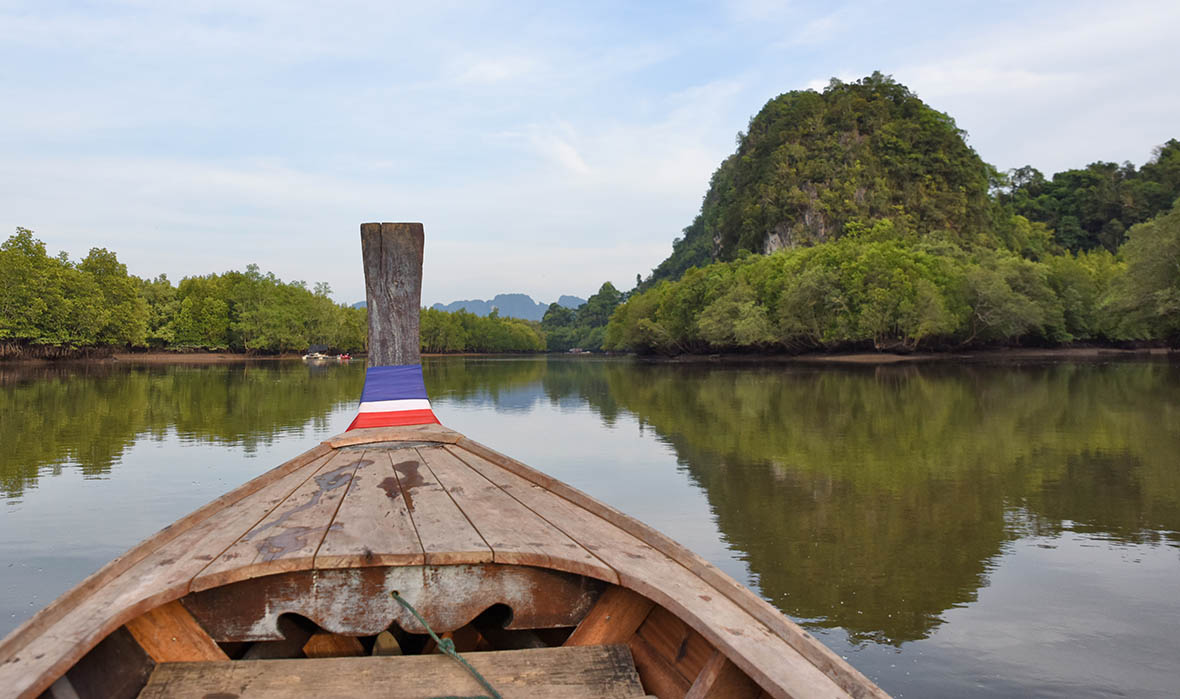
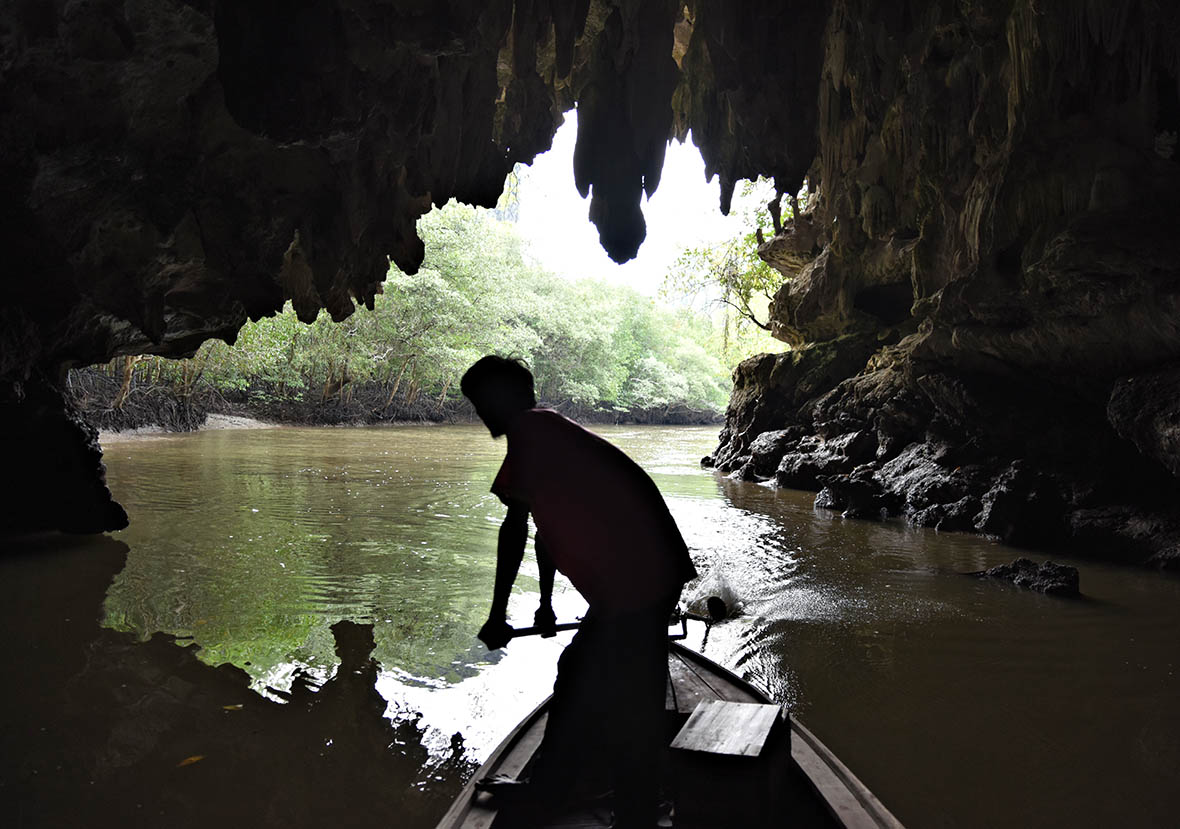
Then darkness arrived. We floated into what looked like a giant stone mouth. Decorated by stalagmites and stalactites, this cave was bracingly silent, save for what sounded like the shrill squeak of bats. Soon, at the other end, daylight returned before we did a 180-degree hook and retraced our watery path. This was not a rock art site, merely a spectacular passage called Lot cave which my guide wished me to see.
A few minutes later, we turned down a narrow tributary of the Tha Pring and reached a small jetty at the base of a karst peak. This was it: Phi Hua cave. The infrastructure here is basic, which is not great for tourism but, for me at least, heightened my sense of exploration.
I climbed into the first of the two chambers of Phi Hua, both of which are embellished by ancient art. Mr. Lining was the first such marvel I spotted, with his long body and curled, Goat-like horns marked out in red-orange paint. On the cave walls were a pair of hands, an insect, and a bird.
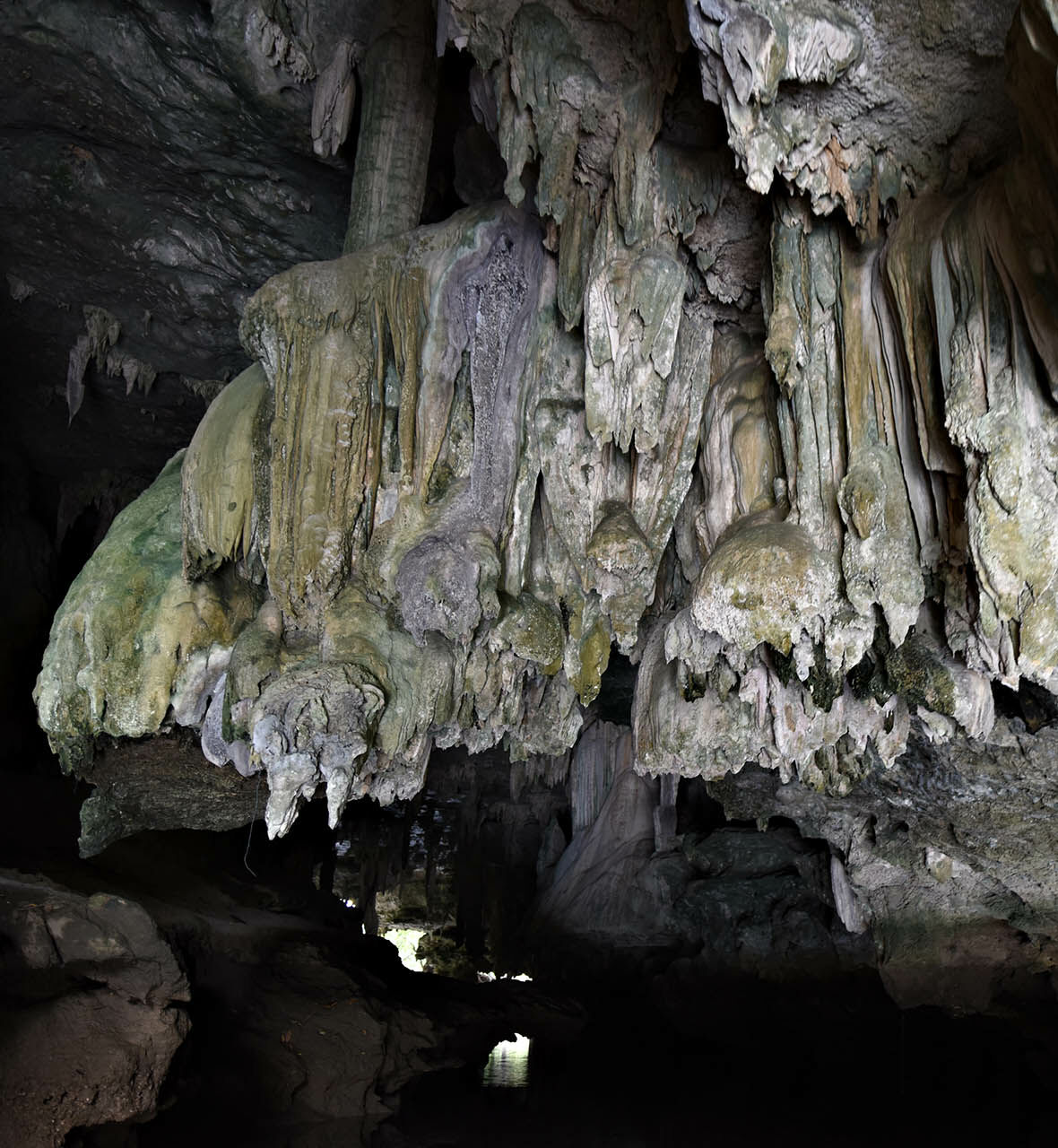
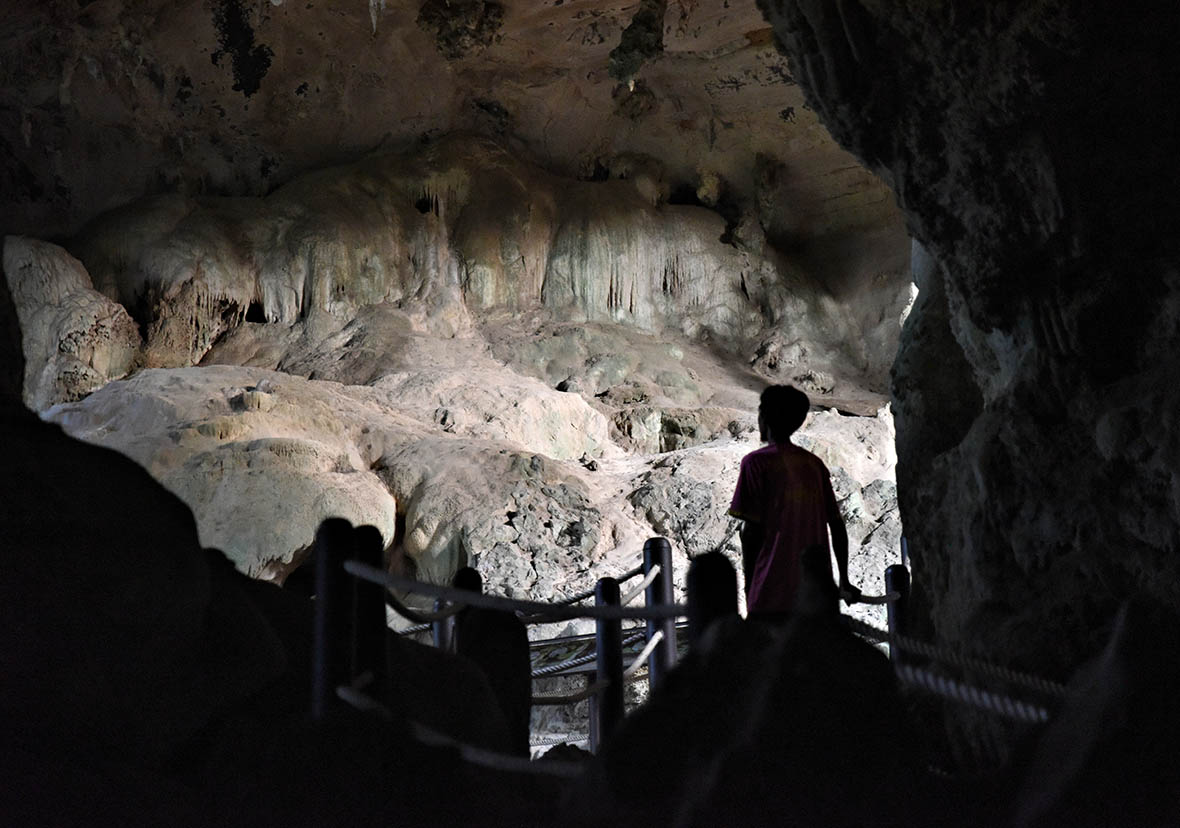
The second chamber is particularly magnificent—tall and broad, with greenery peeking through the window-like openings at its eastern end. Were it not a venue for prehistoric paintings, it still would be worth a visit. The art scattered through this cave is not visually arresting, mostly smaller than 50cm in length and heavily faded due to the vast passages of time.
Their significance, however, is enormous. Phi Hua wasn’t discovered until the 1950s. When it was first studied by the Thailand Government Fine Arts Department in 1979 they found paintings and human skeletons from prehistoric times. Along with people and animals, the art depicted boats and fishing nets, revealing how an ancient civilization fed itself here up to 5,000 years ago.
While tourism is now king in Krabi, many locals still make a living by hauling catch out of its rivers and ocean. In this way, they remain connected to the people who documented their ancient world on the walls of Phi Hua. Prehistoric painters illuminated a dark space with their imagination and skill, creating a phenomenal underground art gallery.

